What was the selection process for astronauts and how were they trained?
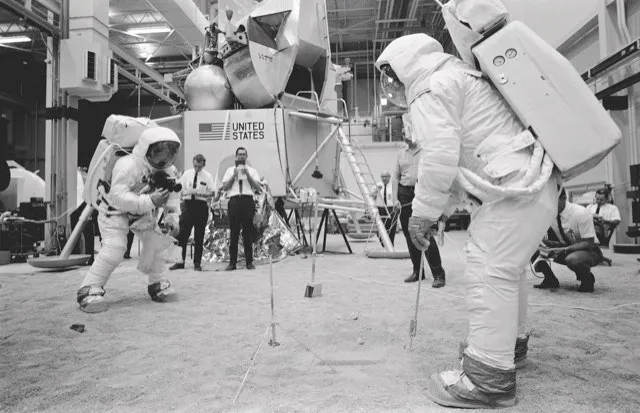
Potential astronauts were put through their paces in rigorous physical and psychological tests. They all had to meet the basic criteria of being 25-35 years old, under 5ft 11in (1.78m), hold a degree in engineering or physical science and have logged at least 2,000 flying hours with test-pilot experience.
Their training was tough and varied. Astronauts were pushed to their limits in g-force training, learnt to manoeuvre themselves in zero gravity and even practised planting the flag. To recreate the lower gravitational pull of the Moon, astronauts were suspended sideways and had to walk along a wall. When Neil Armstrong landed, he commented that walking on the Moon was much easier than the training.
The plan for their return to Earth was for the crews to splashdown in the sea, so a lot of time was spent practising getting out of model spacecraft in swimming pools or the Gulf of Mexico. However, in case they missed the ocean on their return to Earth, all astronauts also had to learn jungle and desert survival skills.
Read more about the Apollo programme:
- The Space Race: how Cold War tensions put a rocket under the quest for the Moon
- How to argue with a Moon landing denier
- “We choose to go to the Moon”: Read JFK’s Moon speech in full
How did the astronauts breathe?
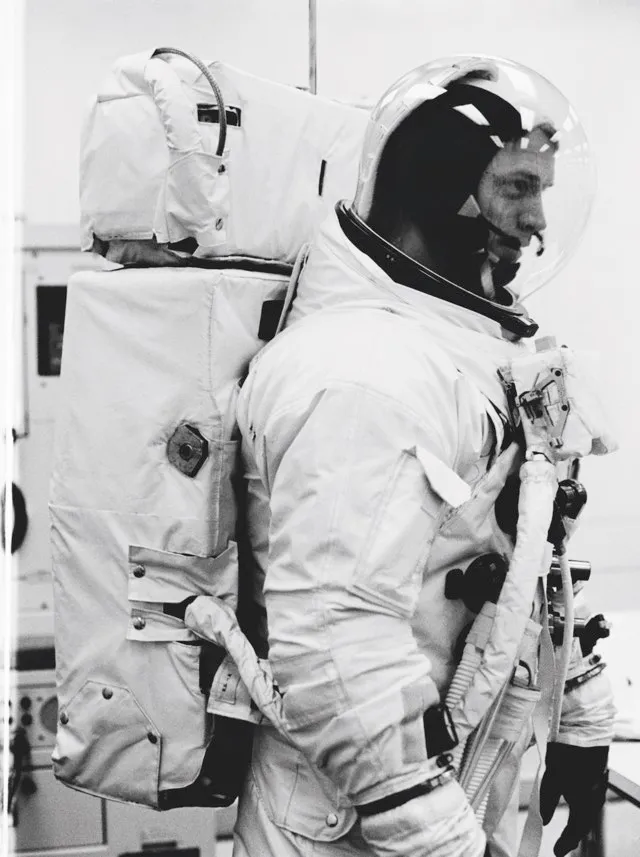
The spaceship was pressurised with an on-board oxygen source that enabled the crew to breathe normally. When they were on the Moon, astronauts wore a Portable Life Support System (PLSS), which was the large box on the back of their spacesuits. This provided them with oxygen to breathe in and removed the carbon dioxide they exhaled.
What did the Apollo astronauts eat in space?

The crew of Apollo 11 had a large selection of meals, though they were generally unimpressed with their taste and difficulty to prepare.
The larder included about 70 different freeze-dried dishes, plus a variety of drinks, each of which had to be rehydrated by adding water. This was done by inserting a probe through a valve in the plastic pouch and injecting the correct amount of fluid. Both hot and cold water were available in the command module, though it stayed at room temperature in the lunar module.
The packet was then kneaded for three minutes before the mushy contents were squeezed into the mouth or scooped up with a spoon. In-flight meals came in red, blue and white plastic bags, colour-coded for each crewmember and labelled with the date and time to eat it.
After each meal, germicide pills were put in the empty food bags to prevent fermentation and gas production. The rubbish was then stored in a waste disposal compartment.
What’s on the menu?
Meals for the Apollo missions needed to lightweight, compact and suitable for zero gravity. Crumbs had to be avoided at all costs, in case they got into equipment and caused damage, but the menus gradually increased and improved as the Apollo programme progressed…
Apollo 7 (11-22 October 1968)
The crew of the first American manned spaceflight got to enjoy rehydrated foods such as shrimp cocktail and chicken salad, which each had a consistency that more closely resembled baby food.
Apollo 8(21-27 December 1968)
Thermo-stabilised ‘wetpack’ foods were introduced on Apollo 8, which were said to be tastier and easier to prepare. On Christmas Day 1968, the Apollo 8 crew were able to tuck into turkey and gravy with spoons. This was a breakthrough: the moisture in the food meant it stayed on the spoon even in zero gravity.
Apollo 11(16-24 July 1969)
Treats of cheddar cheese and frankfurters found their way on to the menu for the first Moon landing.
Apollo 12(14-24 November 1969)
The newly introduced freeze-dehydrated scrambled eggs proved extremely popular.
Apollo 14(31 January-9 February 1971)
A drinking device built into the lunar suits meant astronauts could keep up their fluid intake during Moonwalks.
How did the crews communicate?
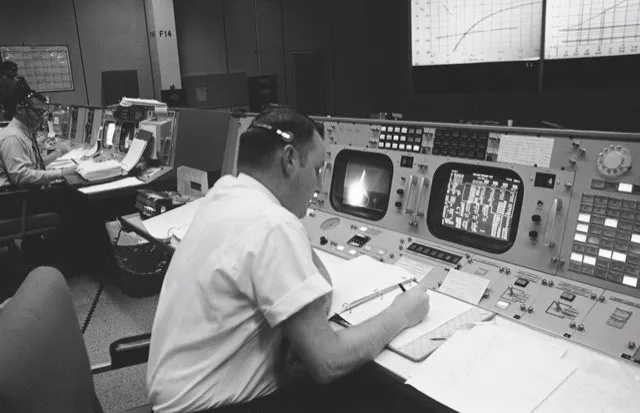
The astronauts communicated in the same way pilots on Earth do – via radio. Range wasn’t an issue as radio signals don’t stop unless they are blocked. This meant when the command module was orbiting the far side of the Moon, the command module pilot was unable to communicate with either the crew on the Moon or mission control on Earth.
How did Apollo astronauts sleep?
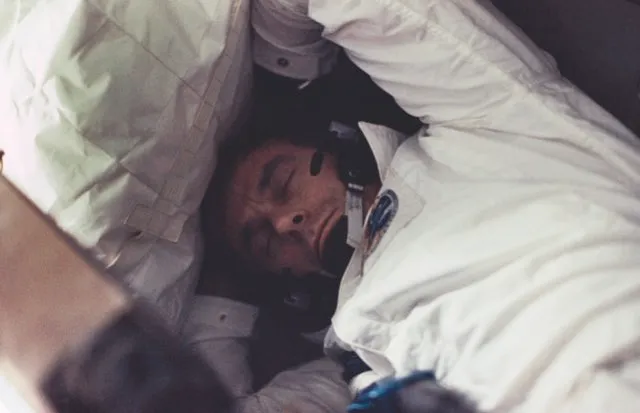
The astronauts slept in ‘sleep restraints’, which were sleeping bags tied to the command module’s cabin to stop them floating about. Restraints were tied under the left and right seats, and also above the right seat. They could be rolled up and stored when not in use. When on the Moon, the gravitational pull allowed astronauts to sleep on the floor of the lunar module.
Listen to podcastsabout the Apollo Programme:
- Science Focus Podcast | Why is the Moon landing still relevant 50 years on? – Kevin Fong
- Science Focus Podcast | The mindset behind the Moon landing – Richard Wiseman
- Radio Astronomy Podcast| Talking Apollo moonwalkers with author Andrew Smith
Did anyone get ill in space?
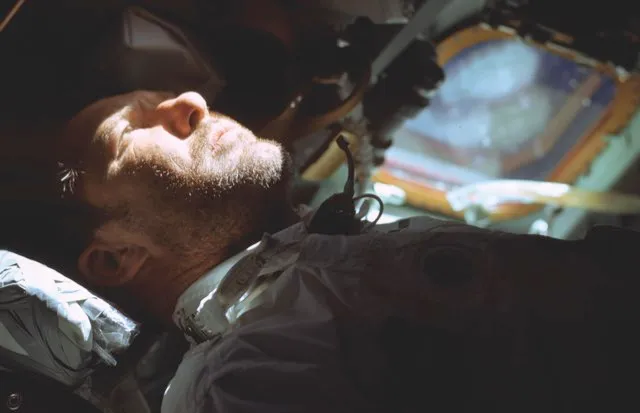
Yes, Wally Schirra and the rest of the Apollo 7 crew had colds. Without any gravitational pull to clear the mucus, a cold in space is very unpleasant. The crew got increasingly grumpy and refused to wear their helmets during re-entry, so that they could blow their noses.
Motion sickness was also quite common. On Apollo 8, Frank Borman suffered from motion sickness and diarrhoea. His crewmates Jim Lovell and William Anders had to help him chase down particles of vomit and faeces, which were floating around the cabin.
How did Apollo crews go to the toilet in space?
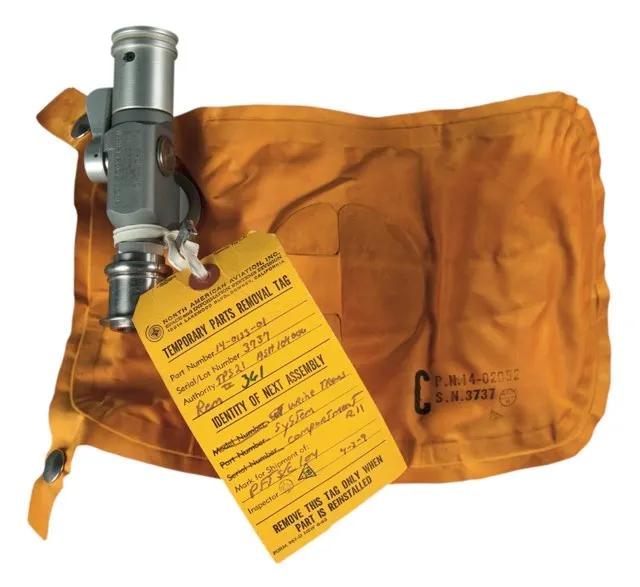
This was definitely one of the least pleasant aspects of life in space. For bowel movements, astronauts taped a plastic bag to their buttocks. The lack of gravitational pull was an issue that was never overcome on the Apollo missions. As a result, a finger-sized pocket had to be included in the side of the bag so the crewmen could separate themselves from their faeces once they were finished. They then had to pop in a capsule of germicide and knead the two together.
The Apollo 7 crew returned with a memo that read: “Get naked, allow an hour, have plenty of tissues handy…” Even with this advice it went wrong on Apollo 10, when astronauts encountered “a turd floating through the air”. Twice.
Urinating, in comparison, was much easier. Astronauts strapped on a rubber pouch, which came in three sizes – small, medium and large. Michael Collins remarked that the Apollo 11 crew referred to them in the more light-hearted terms: “extra large, immense and unbelievable”.
These were attached to a hose that, when the valve was opened, would suck the urine into space. This wasn’t as simple as it may seem. Open the valve too soon and your private parts would be painfully sucked in. Open it too late and urine droplets would float all over the spacecraft… and the unimpressed members of your crew.
How did the astronauts wash?
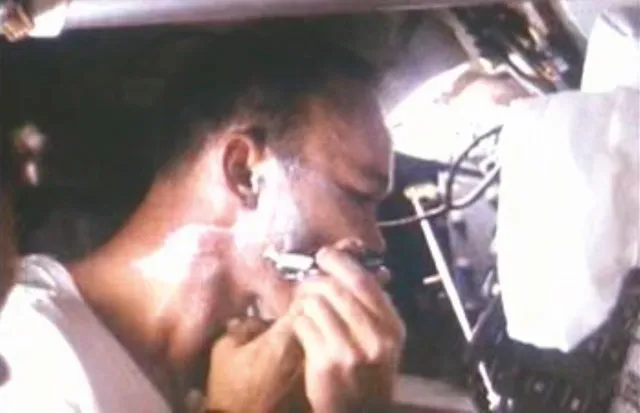
On board each Apollo spacecraft was a pack of dental floss, three toothbrushes and toothpaste that was safe to swallow.
The Apollo 10 crew was the first to shave in space. A lot time was spent investigating electric razors, but there was always the issue of stubble floating into the machinery and causing problems. Someone suggested using a razor and brushless shaving cream. This worked perfectly as the cream kept the hair together, which could then be wiped off.
Read more about the heroes behind the Moon landing:
- Neil Armstrong: Apollo 11 mission commander
- Apollo 11 Mission Control: the people behind the Moon landing [via BBC Sky At Night Magazine]
- Ladies who launch: the women behind the Apollo Program
What did the crew wear?
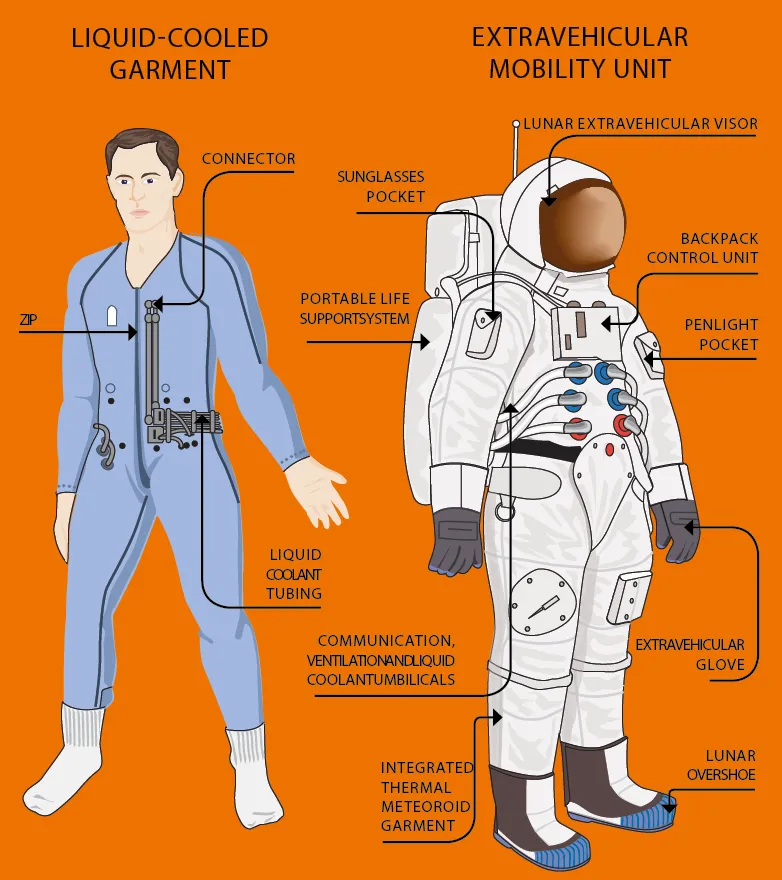
The crew each had three outfits. The first was a cotton all-in-one undergarment. The second was referred to as the ‘inflight coverall garment’ and consisted of a jacket, a pair of trousers and a pair of boots. This was made from Teflon as it was non-flammable and did not cause skin irritation. Finally, there was the space suit, also known as Extravehicular Mobility Units. This was worn for lift-off, re-entry and exploring the lunar surface.
The first layer to be donned was water-cooled underwear, made up of flexible tubes embedded in a mesh fabric. On top of this was a five-layer, airtight pressure garment, articulated at the knees and elbows. Then came a 13-part outer garment, designed to protect the occupant from micrometeorites, ultraviolet light and other radiation. It could sustain surface activity for up to four hours before a recharge.
A chest-mounted control unit allowed the wearer to adjust the temperature and flow of oxygen.
How much did the Apollo missions cost?
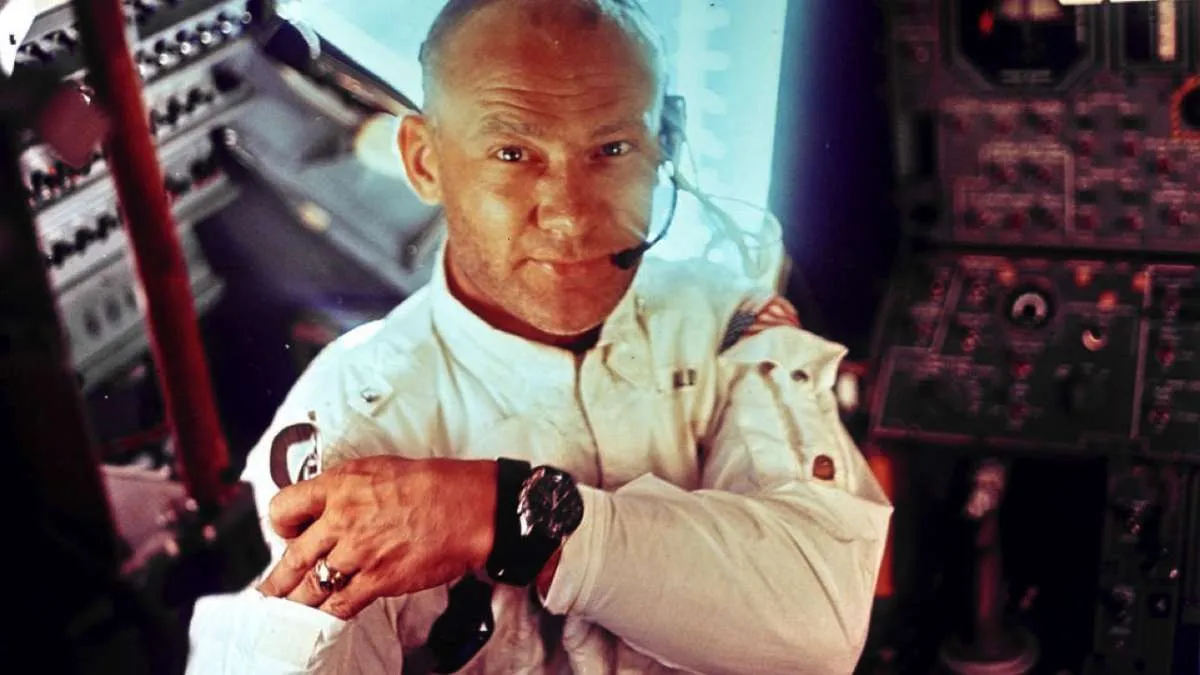
A preliminary cost of $7 billion was quoted. However, NASA administrator James Webb upped the estimate to $20 billion before handing it over to Vice President Lyndon Johnson.
Many were shocked by the cost, including the President, but Webb’s estimate proved far more accurate. The final cost was reported to Congress in 1973 as $25.4 billion, which equates to roughly $170 billion (£110 billion) today.
Did they really leave poo on the Moon?
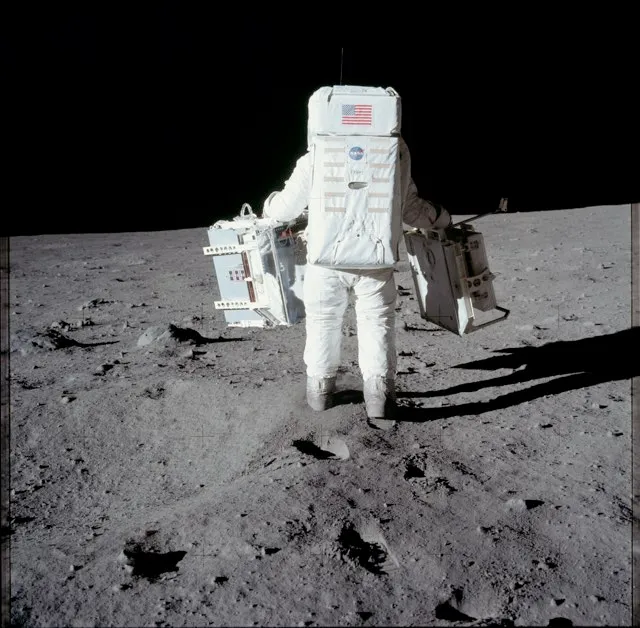
Yes! The Apollo landers were designed to lift off from the lunar surface at a particular weight. Since the Apollo astronauts were charged with bringing large amounts of Moon rock back home, the weight of those samples was offset by leaving behind unwanted items. This discarded junk included, among other things, two golf balls, 12 cameras, 12 pairs of boots, a gold-plated telescope, and a total of 96 bags of ‘human waste’ – urine, faeces and vomit!
Although not the best example of green thinking, this detritus will have had no permanent effect on the lunar environment. Any microorganisms present in the human waste could not have grown under the harsh conditions of the lunar surface. It is possible, however, that some could have survived for a time as dormant, inactive spores. So, after 50 years on the lunar surface the human waste, which is now probably just bags of dust, may contain important information on the survival of microorganisms in space.
Astrobiologists would like to see if any of those microorganisms have undergone any genetic mutations due to the harsh lunar environment, or have indeed survived in a dormant state. They hope one day that private companies may eventually return this human waste for study!
What tech would the Apollo 11 mission have today?
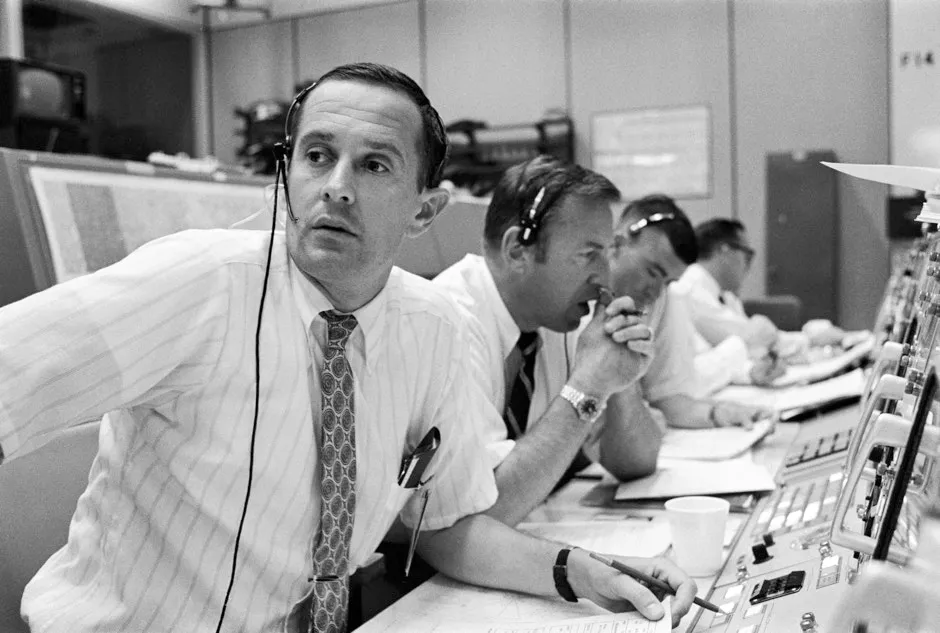
Since the 1969 Apollo 11 mission, the most obvious advances have been in computing and electronics (especially in reducing size).
The Apollo Guidance Computer had RAM of 4KB, a 32KB hard disk. It was fairly compact for its time, measuring 60cm x 30cm x 15cm, but weighed around 30kg. Current computers are much lighter, at least 1000 times as fast and have storage capacities that are millions of times those achievable in 1969.
Check out amazing pictures from the Space Race:
- USA vs USSR - the race to the Moon
- 50 beautiful photos of the Moon landing missions from the Project Apollo Archives
Why are there still human footprints on the Moon?
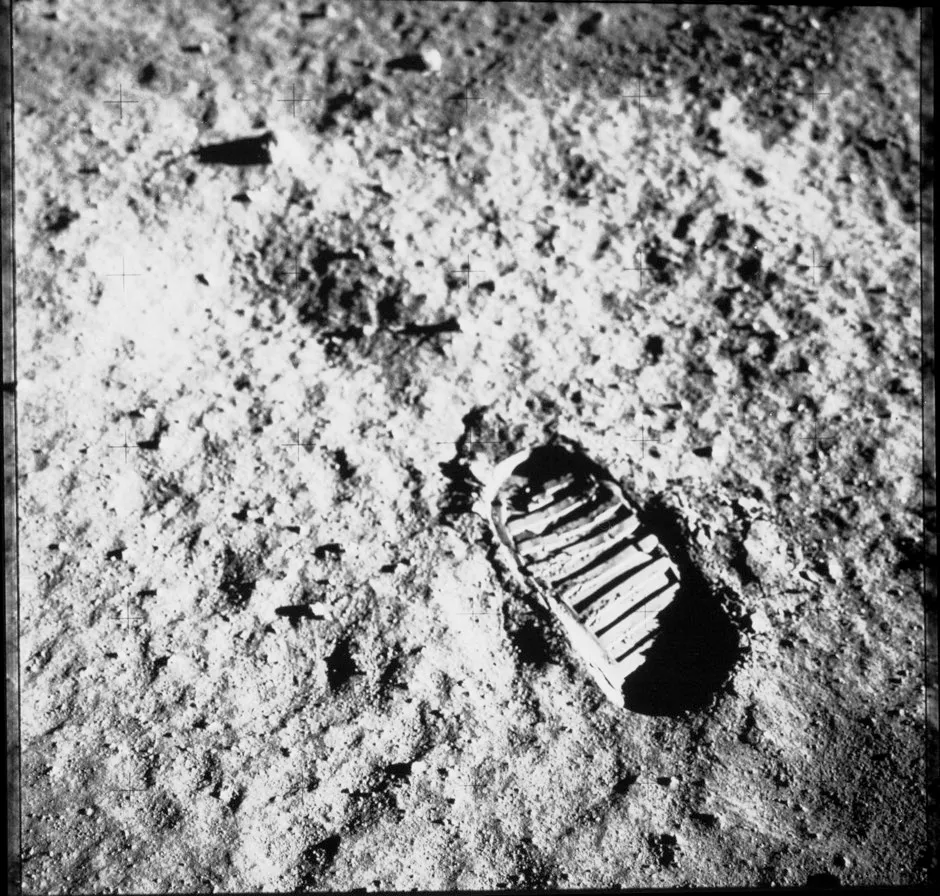
Even though nobody has stepped on the lunar surface since the last Apollo mission in 1972, the footsteps will be there for many years to come. The Moon is geologically dead so the marks won’t be wiped out by earthquakes or volcanoes. Neither is there any wind to disturb them or rain to erode them.
How long would it have taken an Apollo astronaut to walk around the Moon?
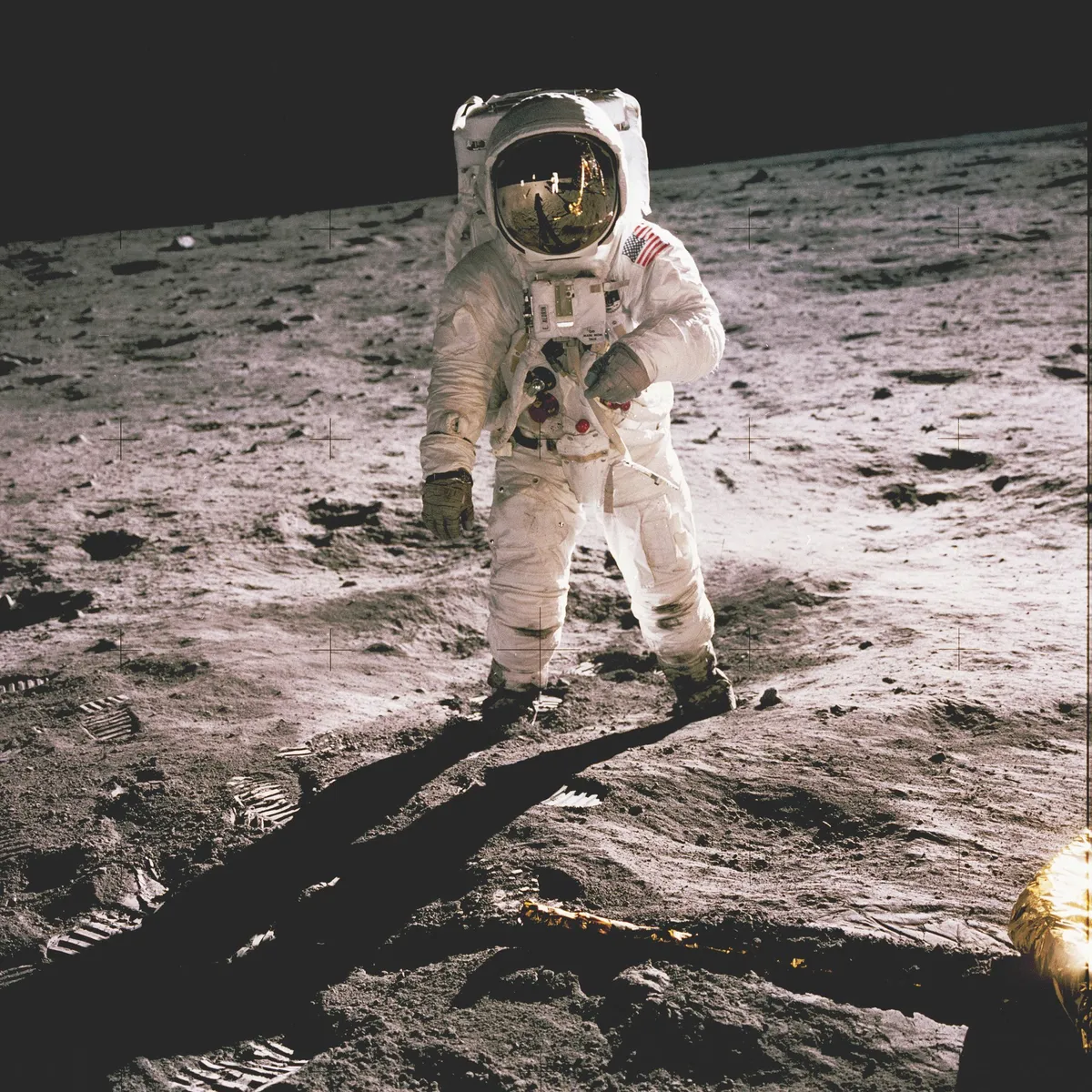
The Apollo astronauts managed a walking speed of about 2.2km/h, which is around half of the typical speed on Earth. This is partly because the Moon’s lower gravity gives you much less traction on the ground, but the Apollo spacesuits were never really designed with long-distance hikes in mind.
A 2014 NASA study looked at the theoretical maximum walking speed on the Moon, finding that you could walk at 5km/h before you would need to break into a loping run. At this speed, you would travel the 10,900km circumference of the Moon in 91 days of non-stop walking.
How many flags are still on the Moon?
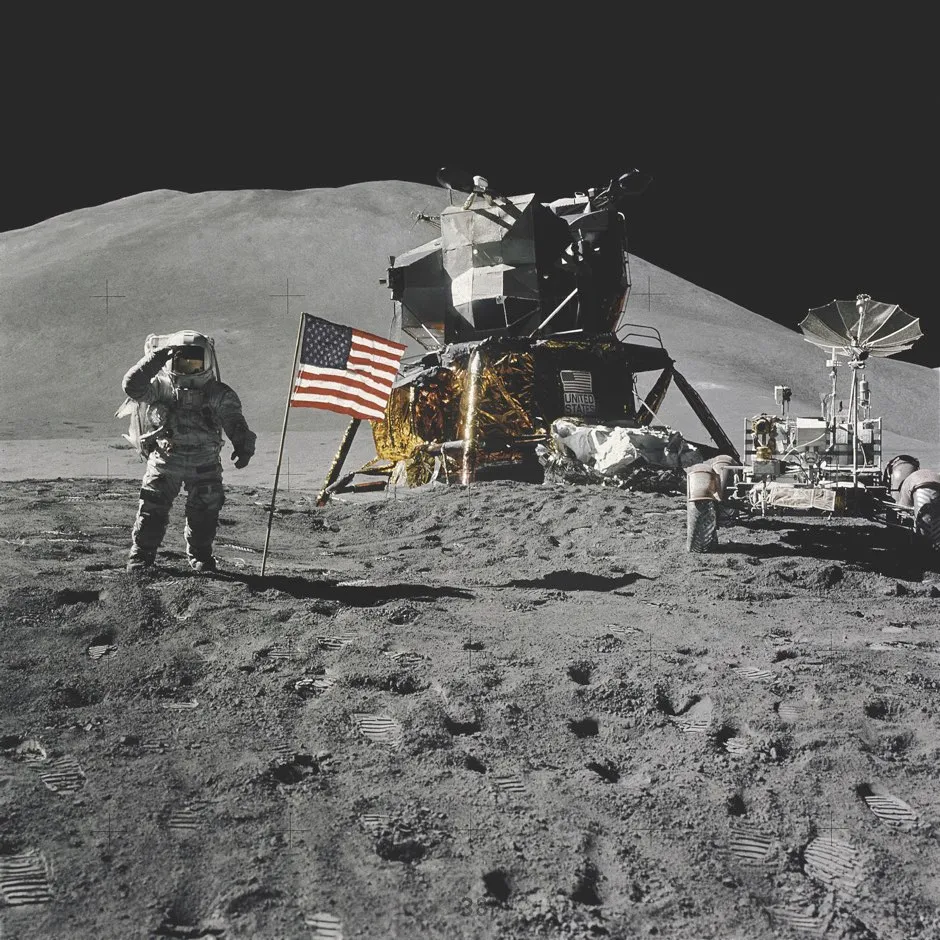
Six flags were planted on the Moon – one for each Apollo landing. Apollo 11’s flag was too close to the lander and was knocked over by the rocket exhaust when Armstrong and Aldrin took off again. But high-resolution images from the Lunar Reconnaissance Orbiter show that the other five are still standing. The flags were made of ordinary nylon though, so they have all long since been bleached white by the Sun.
Follow Science Focus onTwitter,Facebook, Instagramand Flipboard
